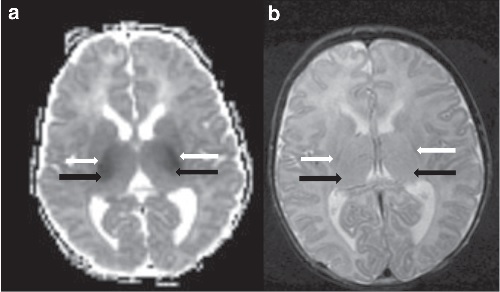
Hypoxic-ischemic encephalopathy (HIE) is a devastating condition affecting newborns, marked by reduced blood and oxygen flow to a baby’s brain during pregnancy or childbirth. This can result in significant neurological damage or other lifelong disabilities. Exploring the primary factors that contribute to the onset of HIE is crucial for preventive strategies and improving outcomes for affected infants. This article will discuss in detail the major triggers and HIE causes, offering essential information for healthcare professionals and families.
Complications During Pregnancy
Complications during pregnancy pose significant risks and are among the leading causes of hypoxic-ischemic encephalopathy (HIE). When conditions like preeclampsia or gestational diabetes occur, they disrupt the normal flow of oxygen and nutrients to the fetus by compromising placental function. Placental abruption, another serious condition, involves the placenta detaching from the womb’s wall prematurely, drastically reducing the fetus’s oxygen supply. Regular prenatal check-ups are crucial for detecting these issues early. Through monitoring and managing these complications, healthcare providers can significantly lower the risk of HIE and improve pregnancy outcomes.
Issues During Childbirth
Childbirth is a critical period where various factors can lead to HIE. Obstacles such as umbilical cord prolapse or nuchal cord, where the cord wraps around the baby’s neck, can dramatically reduce oxygen delivery. Prolonged labor can exhaust the infant, depleting oxygen reserves, while a rapid delivery might cause physical trauma. The role of healthcare professionals is pivotal here; they must make quick decisions about when to intervene surgically with a cesarean section to prevent prolonged periods of distress that might lead to HIE.
Inadequate Fetal Monitoring
Effective fetal monitoring is a linchpin in preventing HIE. It involves tracking the baby’s heart rate to detect distress signals indicative of oxygen deprivation. Flaws in the monitoring process or delays in interpreting distress signs can postpone necessary interventions, increasing the risk of HIE. Hospitals and birthing centers must equip their staff with the proper training and tools to ensure that monitoring is both accurate and effective, enabling immediate response to prevent potential brain damage.
Maternal Health Issues
The health of the mother is intrinsically linked to the well-being of her baby. Chronic conditions like hypertension or diabetes can affect the mother’s circulatory system, thereby impacting the flow of oxygen-rich blood to the fetus. Ensuring that such health issues are well-managed during pregnancy through medication, diet, and regular medical care is essential. This proactive approach helps maintain optimal health conditions for both mother and child, reducing the risk of complications that could lead to HIE.
Premature Birth
Premature infants face a particularly high risk of developing hypoxic-ischemic encephalopathy (HIE) due to their premature organ systems, which are not yet robust enough to fully support life outside the womb. Their lungs, heart, and brain may not be fully developed, making them vulnerable to even minor fluctuations in oxygen and blood flow. Specialized care in neonatal intensive care units (NICUs) provides these infants with a controlled environment where temperature, oxygen levels, and medical care are meticulously managed to mimic the conditions of the womb as closely as possible. The healthcare team in NICUs, including neonatologists, nurses, and respiratory therapists, works collaboratively to monitor the infants’ vital signs continuously and intervene at the slightest sign of distress.
Medication and Medical Intervention
While medical interventions are often necessary during labor, their misuse can increase the risk of HIE. For instance, mismanaged use of labor-inducing drugs like Pitocin can cause overly strong and frequent contractions, compromising the oxygen supply to the fetus. Careful management of these drugs, combined with diligent monitoring, is essential to balance the need to progress labor with the safety of the baby, ensuring that interventions do not inadvertently harm the newborn.
Infections During Pregnancy or Delivery
Infections during pregnancy, such as chorioamnionitis, present a serious risk not just to the mother but also to the developing fetus. These infections can lead to an inflamed uterine environment, disrupting the placenta’s ability to support the fetus with adequate oxygen and nutrients. Vigilance in detecting and treating maternal infections is paramount. This includes regular screening for infections during prenatal visits and immediate treatment with antibiotics if infections are detected. Moreover, during delivery, healthcare providers are particularly alert to the signs of infection to initiate swift medical response to protect both mother and baby.
Genetic Factors
Some instances of HIE are linked to genetic and congenital anomalies that make a fetus more susceptible to oxygen deprivation. Conditions such as congenital heart defects or metabolic disorders can impact the baby’s ability to process oxygen efficiently. Early genetic screening and prenatal testing can help identify these risks, allowing for planned medical interventions that can significantly reduce the likelihood of HIE.
Recognizing the primary factors leading to hypoxic-ischemic encephalopathy is vital for its prevention and effective management. Through enhanced prenatal care, skilled childbirth management, and postnatal support, the risks associated with HIE can be substantially reduced. For families and healthcare providers, understanding these factors is a step toward safeguarding the neurological health of newborns and ensuring they have a healthy start in life.






